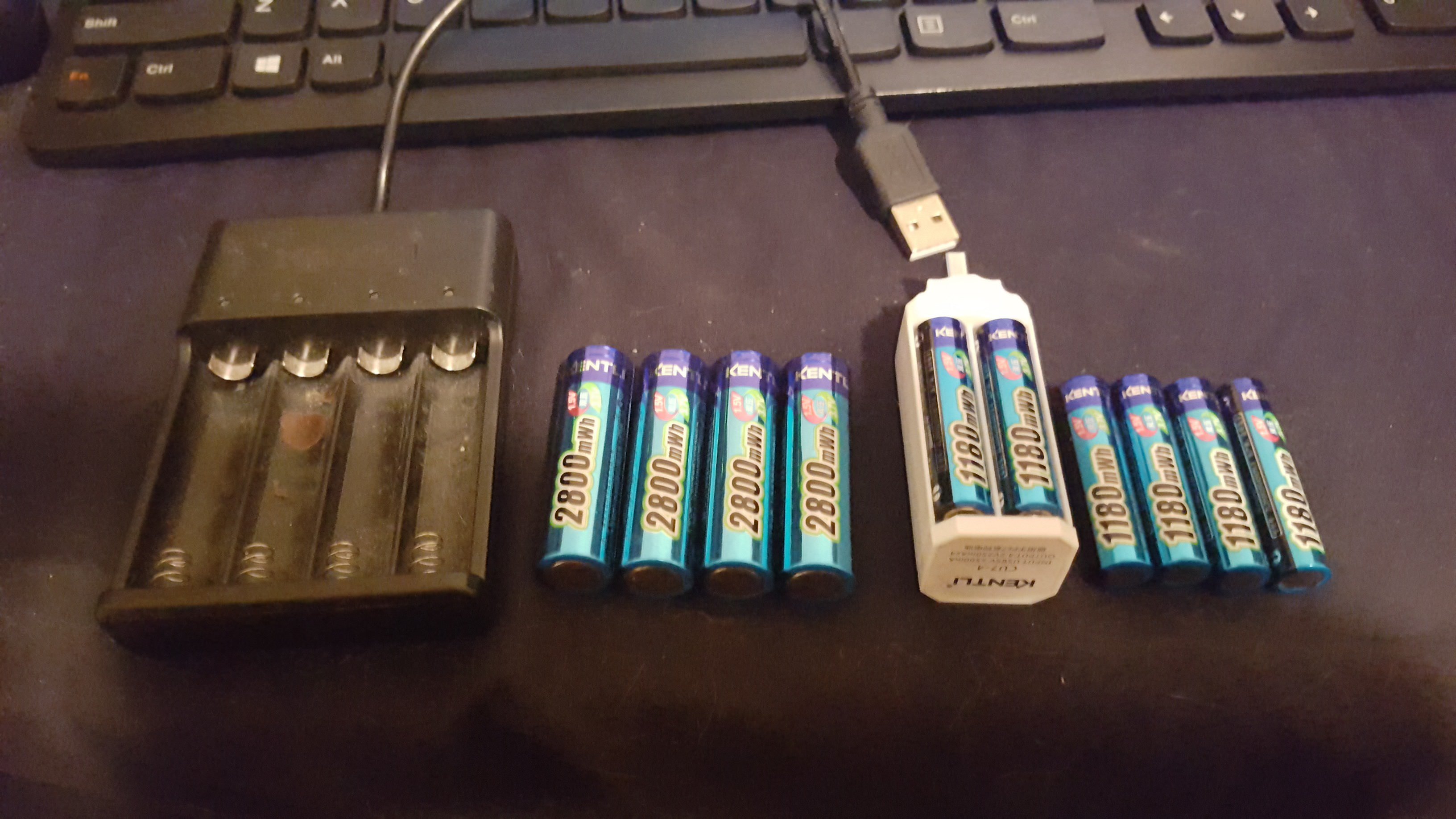
Long time followers will know I am a battery fanatic. Everything I own that's electric needs to run on lithium batteries. Now I hear you saying "But doesn't Energizer make lithium AAs?" The answer is: sort of. They make lithium iron disulfide batteries that are non-rechargeable.
Technically, that's a "lithium battery". But it's single use, and not the same chemistry as the rechargeable lithium batteries found in, say, electric cars and bicycles. Rechargeable AAs based on NiMH (Nickel Metal Hydride) chemistry have existed for decades, but NiMH is a step down from lithium ion in terms of energy density vs. weight.
It may surprise and delight you to learn, then, that actual rechargeable lithium ion AAs and AAAs do exist, for the devices you own which still use that format of battery. A company named Kentli makes them. You engineers out there might be scratching your heads right about now.
After all, every lithium battery type has a nominal voltage of around 3.7 volts. Alkaline AAs and AAAs are 1.5 volts. NiMH AAs and AAAs are 1.2 volts. How do you make a lithium battery which outputs a voltage in that range, so it can be used in devices designed for alkaline or NiMH batteries?
The answer, impressively, is that they built an itty bitty buck converter into every cell to step down the voltage from 3.7 to 1.5. This of course incurs some waste, which is why the AAs are 2800mah instead of the 3000mah offered by the single use Energizer lithium AAs.
However in my opinion, 200mah is a small price to pay for a cell that's lighter, charges faster and will survive more discharge/charge cycles than a NiMH battery. It's also self evidently a better deal than an Energizer lithium AA or AAA which can be used only once.
I've had these for some time now and the biggest single advantage is how much faster they charge compare to NiMH. The weight difference is noticeable too, but they accept a charge so much quicker that they're considerably more practical to charge from, say, a solar backpack if you're a photographer on the go.
The downsides are the higher cost per cell ($10 each) and the fact that they require their own special chargers. That's right, the chargers you already had for your NiMH AAs and AAAs won't work for these. Whether that's a deal breaker will depend on the person. They do often come together as a bundle though.
I for one depend on electronics enough that having the absolute newest, best, most energy dense means of storing power is important to me. Then again I also kind of go overboard with it. For what it's worth, the benefits really are sweet, and they make a durable, good looking product.
Stay Cozy!
